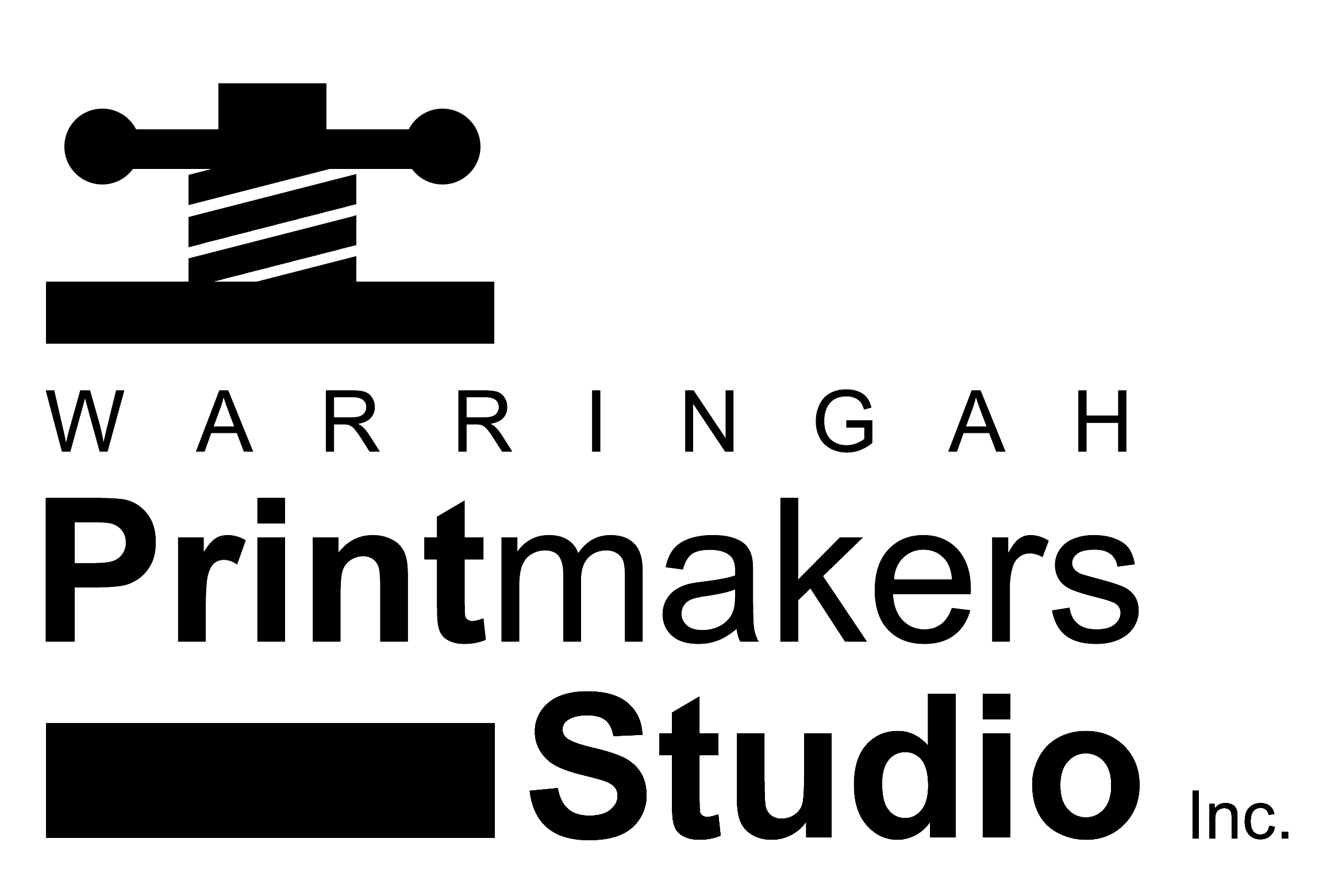SAFER PRINTMAKING
Why is it important to use safer printmaking techniques?
“It is a well established fact that the conventional materials for intaglio printmaking contain quite a cocktail of acids and chemicals, the danger of which is unmatched in the creative arts. Each of them may have damaging effects on the health of the artists and on the surrounding environment, but in combination they pose a very serious threat to anyone who uses them with some frequency. ”
(Henrik Boegh – Handbook of Non – Toxic Intaglio, 2003).
The need for change in the field of printmaking is compelling: scientific studies confirm the toxicity of many of the solvents, acids and other materials that are found in the traditional print shop. There is strong evidence that conventional practice is detrimental to health. Long term practice of traditional printmaking, be it in etching, lithography or screenprinting, may lead to serious illness and premature death in long term practitioners of the art. In education the various traditional methods can be at odds with health and safety regulations.
Traditional Acid etching processes produce significant amounts of toxic fumes. In the commonly used nitric acid etch, for example, the nitrous oxide gases produced are suspected of causing eye, nerve, lung, and kidney damage, as well as impotence and genetic effects.
Metal Salt etching comprises two basic kinds of process: The Edinburgh Etch and The Saline Sulphate Etch. The Edinburgh Etch (© F.K. 1997), suitable for copper, brass, and steel consists of a specific solution of ferric chloride with the addition of citric acid as a ‘chelating’ agent or catalyst.
The Saline Sulphate Etch (© F.K. 2002), is designed for etching zinc, aluminium, and mild steel and consists of a copper sulphate and sodium chloride mixture in equal parts. Due to their low hazard rating, the metal salt etching methods are both suitable for use in a professional printmaking environment as well as in an artist’s personal studio.
In contact with the chlorine found in common cleaning products, nitric acid can even turn into mustard gas! This extreme hazard is not just theoretical: there is anecdotal evidence of several mustard gas incidents that occurred at professional print studios, both in the UK and the USA.
In industry today, regulations prohibit the use of nitric acid without fully extracted and filtrated glove units similar to those used in the nuclear industry. Regrettably, despite these compelling facts, many artists, workshops, and printmaking departments still maintain that their existing measures provide adequate protection. In many cases such reluctance is more founded on an ‘you can’t teach an old dog new tricks’ attitude than facts; it is hoped that this resource contributes to the wider dissemination of current etching research.
By contrast, the Metal Salt Etching System is free from harmful gas emissions. During etching, the chemical reaction by-products are contained within the etching solution without polluting the workshop atmosphere. The processes are not heat generating, and no vicious reactions can occur during the etching of a plate.
So inert are these processes that extraction and / or containment can be seen as an additional, not a compulsory, safety measure. Over the past two decades there have been reports of two cases of an allergic reaction to the smell of ferric chloride – but this is very rare, and if this occurs alternative etching methods must be employed by the sensitized person (Saline Sulfate Etch / Photo Polymer).
A further benefit is that the superbly accurate etching properties of the metal salt solutions remain constant throughout their usable life, without the gradual deterioration that causes unwanted foul-biting and undercutting- a common feature with the use of conventional acid solutions.
Metal Salt Etching is so much safer because, like a battery, it is based on the principle of electrolysis: metal ions are elegantly exchanged between the poles of two kinds of metal that have an energy potential between them; the old acid etching approach has a much more aggressive chemistry.”
(Friedhard Kiekeben RCA)
“Printmaking offers us unique possibilities to create images that cannot be achieved in any other way though it should always be remembered that it is the image that is important; why it was made not how it was made.
It can be argued that nothing can be totally non toxic but the term
Nontoxic Printmaking has become widely accepted as a description for
safer printmaking practices and techniques with a less harmful environmental impact.
As with all media, or any work, it seems sensible to be as safe as one can and to avoid unnecessary toxins and exposure to harmful substances. By adopting a non toxic approach to printmaking we can assure our own health, that of other practitioners and that of the environment.”
(Mark Graver – Non-Toxic Printmaking, A&C Black, London 2011)
